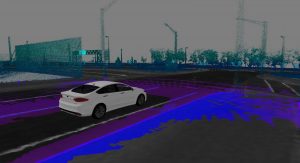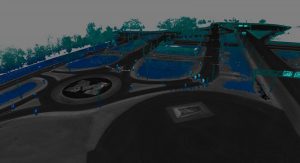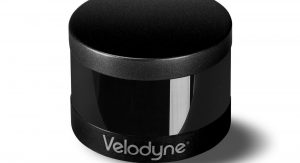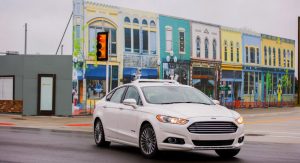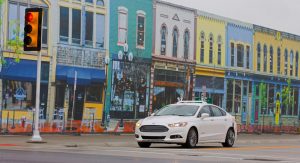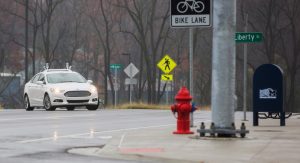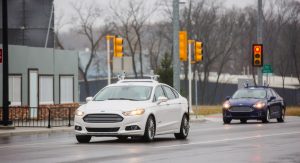Ford is tripling their autonomous vehicle development fleet in order to give themselves an edge over their competitors in terms of software development and on-road testing.
Their fleet of Fusion Hybrid test vehicles, now the largest in the automotive industry, will use a new-gen sensor technology on roads in California, Arizona and Michigan, as about 30 vehicles will be tested in both urban and suburban environments.
The new fleet vehicles will use Velodyne’s new Solid-State Hybrid Ultra LiDAR sensors, which boast a longer range of 200 meters. Nicknamed the ‘Ultra Puck’, these sensors will accelerate the development and validation of Ford’s virtual driver software, which is basically the electronic brain of the self-driving car.
The reason why it’s called the ‘Ultra Puck’ is because of its hockey puck-like size and shape, which is a little ironic considering that hockey is very much a contact sport and contact is exactly what autonomous vehicles will try to avoid.
These third-generation autonomous Fusion Hybrids will come with supplemental features and wiring for power, steering and brakes. These features will of course act as backups if need be, though with progress moving at such a rapid scale, we expect Ford to feel extremely confident about their autonomous vehicle program going forward without any setbacks.
Ford VP Raj Nair said that “Using the most advanced technology and expanding our test fleet are clear signs of our commitment to make autonomous vehicles available for millions of people. With more autonomous vehicles on the road, we are accelerating the development of software algorithms that serve to make our vehicles even smarter.”
While Ford continues to develop their autonomous tech, semi-autonomous features such as the adaptive cruise control, active park assist, lane-departure warning, lane-keeping aid, pedestrian detection, Pro Trailer Backup Assist and vehicle-to-vehicle connection technology, are already available throughout their range.



![Ford To Accelerate On-Road Testing Of Autonomous Vehicles [w/Video]](https://www.carscoops.com/wp-content/uploads/2016/01/ford-tripling-autonomous-vehicle-development-8.jpg)
